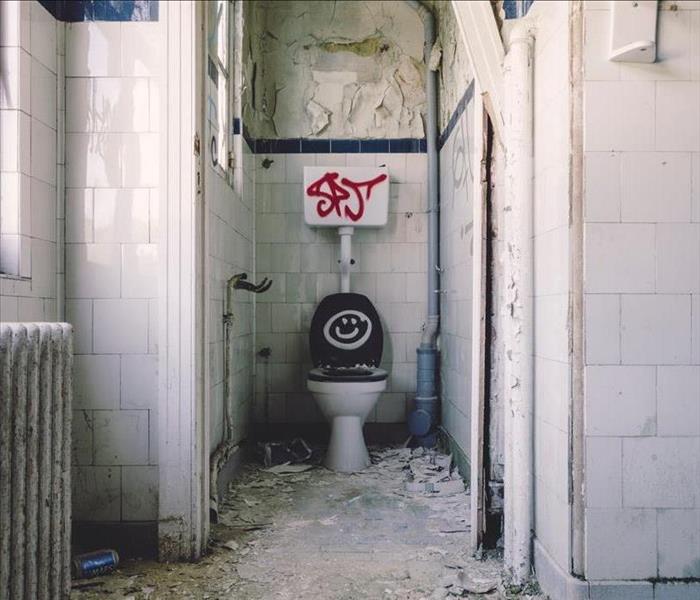Dealing With Toilet Overflow
8/7/2020 (Permalink)
 Sometimes, it is possible to resolve a toilet overflow on your own if you catch it right away and know for a fact that it hasn’t caused water damage.
Sometimes, it is possible to resolve a toilet overflow on your own if you catch it right away and know for a fact that it hasn’t caused water damage.
There’s nothing worse than realizing that your toilet has overflowed, leaving water spread across your bathroom floor, risking serious water damage. Water resulting from a toilet overflow can inflict damage on bathroom floors and potentially leak into the ceiling below, creating an ever more serious issue. Toilet overflows can be messy, unpleasant, and potentially costly, which makes it important to do everything in your power to prevent them from happening. To understand common causes of toilet overflows, prevent them from happening, and know how to clean up, continue reading.
What Causes a Toilet Overflow?
Toilet overflows can be the result of many different complications. Three common causes are sewage complications, a clogged drain, and a blocked vent.
A full septic tank or a clogged sewer line are two sewage complications that can be the root cause of a toilet overflow. If your home has a septic tank, it works to release excess water into the ground. If your tank is full, the water will travel back into the house, risking an overflow. Additionally, if a sewer line becomes blocked, whether it be by tree roots and debris or sanitary wipes, flooding can occur in addition to a toilet overflow.
When the toilet drain becomes clogged or blocked, which can occur frequently, the toilet cannot flush properly and may overflow. Usually, using a plunger to unclog the toilet works to resolve the issue.
Lastly, the vent pipe works to pump external air, which is used every time you flush the toilet. A blocked vent pipe restricts proper flushing, therefore risking an overflow. A professional, experienced plumber is usually needed in order to relieve the problem.
How to Clean Up
Upon seeing a toilet overflow, your initial reaction may consist of wincing and exclaiming “oh no!” Immediately after coming to terms with what happened, the first thing that you should do is turn off the water and stop the flow of water from the toilet. Next, remove any standing water on your bathroom surfaces as quickly as possible using a mop, wet vacuum, or towels. Regardless of the method you choose, time is of the essence because the longer water sits on surfaces, the more serious damage it may cause. Once all standing water is removed, it is important to use a high-powered fan to dry out the area in order to prevent mold and mildew growth. Lastly, be sure to disinfect and clean both the affected surfaces and any areas nearby.
We’re Water Damage Specialists
Sometimes, it is possible to resolve a toilet overflow on your own if you catch it right away and know for a fact that it hasn’t caused water damage. In most cases, however, toilet overflows cause serious damage that requires the help of a professional to remediate water damage caused by the overflow. For a water damage restoration that you can trust, call SERVPRO today. Our team of water damage specialists are experienced in restoring water damage resulting from toilet overflows. To learn more about the water damage services that we provide, click here.





 24/7 Emergency Service
24/7 Emergency Service